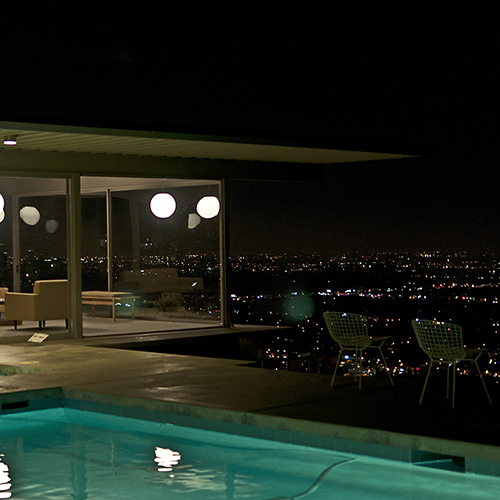
Stahl House (Case Study House No. 22) in the Hollywood Hills, Los Angeles (Photo: mbtrama / CC BY 2.0 DEED)
Since the late 1940s, California has been an epicenter for some of the most striking and innovative modern architecture in the world. World War II and its aftermath opened the state to tremendous population growth, drawing tens of thousands of people to its aircraft and shipbuilding industries and creating a housing boom in which demand far exceeded supply. The need for housing for workers and returning GIs resulted in some of the most iconic examples of mid-century modern houses in the nation. Bill Keene, a lecturer on architecture and urban studies, surveys the bold new landscape of housing design.
To address the housing crisis, the editor of Arts & Architecture magazine originated the Case Study Houses experiment. Between 1945 and 1966, 36 homes were built, most in the Los Angeles area, fostering the use of new materials and construction methods in residential architecture.
The idea of a modern house emerged to include open floor plans and multi-purpose rooms that reflected a more relaxed and informal manner of living. The widespread use of materials such as cement blocks, plywood, and industrial glass dramatically reduced costs and contributed to the clean lines and simple concepts of the iconic California mid-century modern look.
In Palm Springs, Hollywood darlings embraced the beauty and privacy of the desert, commissioning high-end Modernist homes from prominent architects. Developer Joseph Eichler came to build more than 11,000 homes in this style, further popularizing the idea of unadorned spaces and indoor-outdoor living. Such pioneering work not only produced in-demand houses at top speed, but also took California mid-century modern architecture from an experiment of the wealthy to a mass-marketed style trend with implications on a national scale.
World Art History Certificate elective: Earn 1/2 credit*
General Information
*Enrolled participants in the World Art History Certificate Program receive 1/2 elective credit. Not yet enrolled? Learn about the program, its benefits, and how to register here.